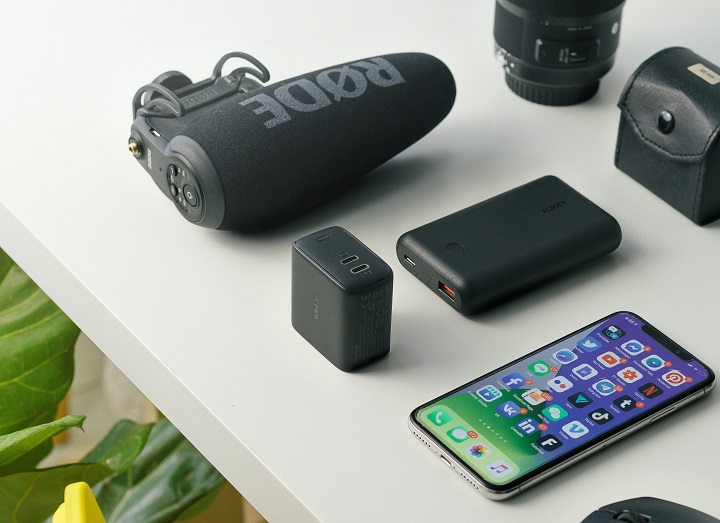Hey there, have you heard about the Internet of Things yet? If not, you’re in for a shock. Those smart devices filling your home—everything from thermostats to refrigerators to lightbulbs—are all connected to the internet. While the convenience of controlling things with your smartphone seems pretty awesome, there’s a downside you need to know about. All those interconnected gadgets are vulnerable to hacking and cyberattacks.
And as more smart devices enter our homes, the risks are growing exponentially. If you thought regular cybercrime was scary, wait until hackers start targeting your toaster or garage door opener. The Internet of Things may take over, but security isn’t keeping up. It’s time for companies and consumers alike to get serious about NAS ransomware protection and safeguarding this new wave of technology. The future is at stake, and it’s up to us to ensure it’s secure.
Table of Contents
1. The Rapid Growth of IoT Devices Poses New Security Risks
The rapid growth of internet-connected devices—the Internet of Things or IoT—has introduced new cyber risks. As more smart devices like security cameras, smart speakers, and smart home assistants join unsecured networks, the potential attack surface for hackers expands.
Billions of IoT devices are operational worldwide, with millions more deployed daily. Many are built without basic security protections like encryption, authentication, or software updates, making them easy targets.
When compromised, hackers can harness the sheer volume of devices to launch disruptive botnet attacks that overwhelm systems and networks. Hackers have already used unsecured IoT devices for massive DDoS attacks that disrupted significant websites.
Personal information and data collected by IoT devices may also be exposed or stolen in cyber breaches. Everything from home security footage to smart speaker recordings could end up in the hands of cybercriminals.
Outdated software and firmware on IoT devices that go unpatched for years pose additional risks. New vulnerabilities that emerge won’t get fixed, allowing hackers to exploit them.
To reduce risks:
- Enable security features on all IoT devices like strong passwords, two-factor authentication when available, and automatic software updates.
- Buy from vendors with a track record of providing security patches.
- Turn off any features not needed.
Staying vigilant about IoT security will help ensure these connected technologies are a benefit, not a liability. The time to start securing the Internet of Things is now.
2. Best Practices for Securing IoT Devices
You’ll want to take some basic precautions to secure your IoT devices.
Change default passwords. As soon as you set up a smart device, customize the password. Default logins are easy targets for hackers. Choose a robust and unique password for each device.
Enable two-factor authentication if available. Two-factor authentication adds an extra layer of security to your accounts. If your IoT device offers this feature, turn it on.
Update firmware regularly. Firmware updates often contain necessary security patches. Check for updates at least once a month and install them promptly.
Disable remote access if not needed. Many IoT devices allow remote access through an app or web portal. Turn off this feature if you don’t use it. Remote access provides another avenue for hackers to get into your system.
Isolate IoT devices on your network. Place smart devices on a separate Wi-Fi network from your computers and other internet-connected equipment. It makes it harder for hackers to access your entire network if they compromise an IoT device.
Be cautious when connecting new devices. Only buy IoT devices from reputable brands and retailers. When setting up a new innovative gadget, be alert for any signs that it has been tampered with. Only connect what you need – the more connections, the bigger the risk.
By taking prudent precautions, you can enjoy the benefits of the Internet of Things with greater confidence and security. While no system is 100% hacker-proof, following best practices will reduce risks and help keep your smart home safer.

3. How Consumers Can Protect Their Connected Homes
As a consumer, you have some control over securing your connected smart home devices. Here are a few steps you can take:
Use strong, unique passwords for your Wi-Fi network and all connected devices.
Don’t use familiar, easy-to-guess passwords like “1234” or “password.” Make them at least eight characters long, using letters, numbers, and symbols. Please change the default passwords on all your connected devices as soon as you set them up.
Enable two-factor authentication whenever possible.
To enhance security for your accounts and devices, please enable two-factor authentication on your Wi-Fi router, security cameras, thermostats, and any other connected tech that offers this additional layer of protection, such as entering a code sent to your phone in addition to your password.
Keep your router and connected device software up to date.
Regular software and firmware updates often contain necessary security patches to protect against vulnerabilities. Enable automatic updates on your router and connected devices when available. If unavailable, check for updates at least once a month and install them promptly.
Be cautious when connecting new devices.
Not all smart home devices meet the same security standards. Do some research on any new tech before connecting it to your network to ensure it has basic security features like password protection and software updates. Avoid very cheap devices that seem too good to be true.
Monitor your connected devices regularly.
Look for any unauthorized access or unknown devices connected to your network. Some routers allow you to see a list of connected devices so you can make sure only your recognized devices are online. Report any signs of hacking or malware immediately to the manufacturer and local law enforcement.
By taking some responsibility for securing your connected smart home, you can have the convenience of the IoT with more peace of mind. Staying proactive and vigilant is vital to reducing risks in an increasingly connected world.
4. Conclusion
So there you have it. The Internet of Things is becoming an inextricable part of our daily lives, with smart devices embedded in our homes, cars, and clothing. But with the proliferation of IoT comes significant security risks if not addressed. As consumers, we all need to do our part to secure these connected devices and be vigilant in monitoring for vulnerabilities.
Manufacturers also must prioritize security in the design process and commit to issuing updates to patch holes. Government regulation and policy reform may be needed to enforce basic security standards. The future is here, but we all must work together to ensure it’s secure. The risks are real, but so are the rewards if we’re proactive. The Internet of Things can enrich our lives, but only if we try to safeguard it. Our hyper-connected world depends on it.
Tech India Today
Related posts
Recent Posts
- How Important is Competitor Analysis? November 13, 2023
- Securing the Internet of Things: A Growing Concern October 2, 2023
- When DevSecOps Shines: Reinventing Software Development May 17, 2023
- Implementing Infrastructure As Code (IaC) With DevOps April 21, 2023
- What Can You Gain By Choosing a Reputable HVAC Software Solution? March 19, 2023
Categories
- Artificial Intelligence (AI) (18)
- Augmented Reality (AR) (5)
- Automotive (7)
- Blockchain (2)
- Business (45)
- Career (4)
- Cloud Computing (6)
- Computers (4)
- Content Management System (1)
- Cryptocurrency (1)
- Cybersecurity (7)
- Data Science (1)
- Digital Marketing (32)
- E-commerce (1)
- Education (6)
- Electronics & Hardware (10)
- Entertainment (5)
- Finance (9)
- Gadgets (23)
- Games (3)
- HTTP (3)
- Industry (2)
- Infographics (3)
- Internet (138)
- Internet of Things (IoT) (22)
- Job (3)
- Lifestyle (2)
- Machine Learning (7)
- Marketing (45)
- Marketplace (2)
- Mobile Apps (20)
- Natural Language Processing (2)
- Network (15)
- News & Trends (15)
- Operating System (OS) (6)
- Programming (10)
- Robotic Process Automation (RPA) (13)
- Security (19)
- SEO (24)
- Social Media (29)
- Software (35)
- Tech India Today (1)
- Technology (166)
- Virtual Reality (VR) (2)
- Web Apps (12)
- WordPress (1)
- Workflow (2)
- Workforce (2)
- Workplace (1)
- Workspace (1)


